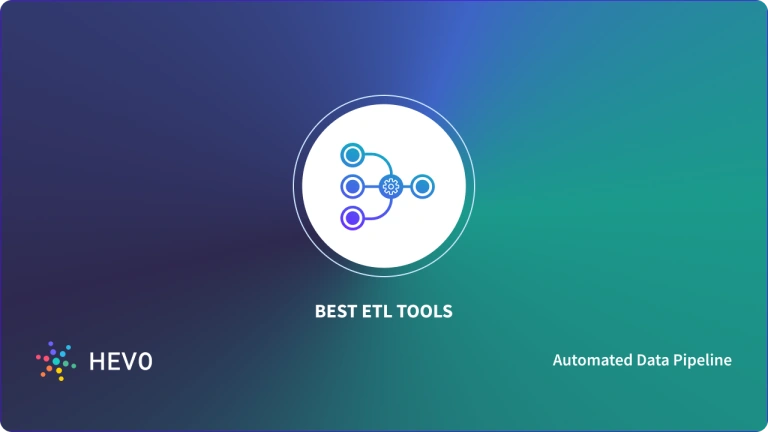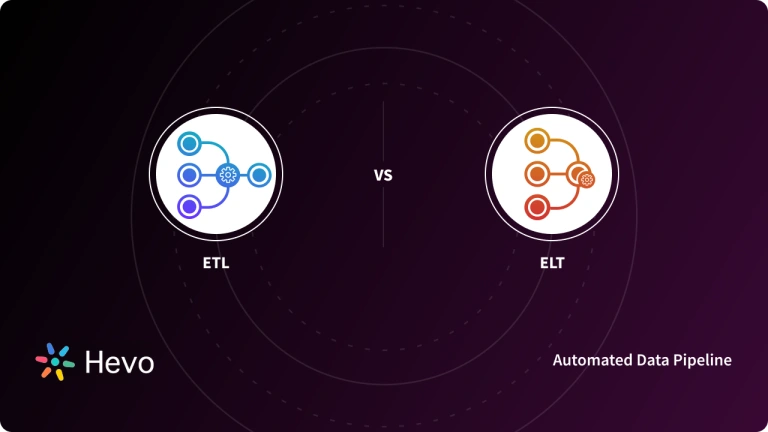ETL is like doing a jigsaw puzzle with no picture on the box. You don’t know what the final result should look like, but you must make all the pieces fit together.
Extract, transform, and load (ETL) processes play a critical role in any data-driven organization. It is likely that your ETL project will not be flawless. ETL processes can present a number of challenges, from data quality and security issues to scalability and maintenance. This article will explore some of the most common ETL challenges and discuss some best practices to avoid them.
Table of Contents
What is ETL?
ETL stands for Extract, Transform, and Load. The purpose of ETL is to make it possible to analyze data that is stored in different systems and different formats and to make it easier to query and visualize the data. ETL processes are typically carried out using specialized software tools or frameworks that are designed to handle large volumes of data efficiently.
Learn how ETL vs. Reverse ETL compares in serving different data needs.
Top 5 ETL Challenges & Issues
Here are a few ETL challenges your organization might face:
1. Overlooking Long-Term Maintenance
Yes, long-term maintenance is definitely one of the common ETL challenges. ETL processes are typically designed to run on a regular basis, such as daily or weekly, to ensure that the data warehouse or data repository is up to date. However, as the organization’s data sources and destinations need to change over time, the ETL process may need to be modified or updated to reflect these changes. This can be a significant ongoing effort, requiring specialized skills and resources to maintain and optimize the ETL process.
Additionally, as the volume and complexity of the data grow over time, the ETL process may need to be scaled or optimized to handle the increased workload. This can involve adding more hardware resources, such as additional servers or storage, or implementing more efficient data processing techniques.
Overall, it is important to consider long-term maintenance when designing and implementing an ETL process and to allocate the necessary resources and expertise to ensure that the process continues to meet the needs of the organization over time.
Looking for the best ETL tool in the market? Migrating your data can become seamless with Hevo’s no-code intuitive platform. With Hevo, you can:
- Automate Data Extraction: Effortlessly pull data from various sources and destinations with 150+ pre-built connectors.
- Transform Data effortlessly: Use Hevo’s drag-and-drop feature to transform data with just a few clicks.
- Seamless Data Loading: Quickly load your transformed data into your desired destinations, such as BigQuery.
- 24/7 Live Support: The Hevo team is available 24/7 to provide exceptional support through chat, email, and support calls.
- Transparent Pricing: Hevo offers transparent pricing with no hidden fees, allowing you to budget effectively while scaling your data integration needs.
Try Hevo and join a growing community of 2000+ data professionals who rely on us for seamless and efficient migrations.
Get Started with Hevo for Free2. Overlooking the Requirements of the End-User
Ignoring the end user, or failing to consider their needs and requirements, can lead to ETL challenges. This is because the ultimate purpose of ETL is to provide the end user with accurate and relevant data that they can use for analysis and reporting. If the ETL process does not take into account the needs and expectations of the end user, it may not deliver the desired results and may not be used effectively.
To avoid this type of challenges in ETL, it is important to involve the end user in the ETL process from the beginning. Consider their requirements when designing and implementing the process. Work closely with the end user to understand their data needs. This lets you identify and address the ETL challenges. Additionally, it may be necessary to provide training and support to the end user to ensure that they are able to effectively use the data that is generated by the ETL process.
3. Underestimating Data Transformations
Data transformation refers to the process of converting raw data into a suitable format for analysis and reporting. This can be a complex and resource-intensive task, especially if the data comes from multiple sources with different structures and formats.
Underestimating data transformation requirements can delay the ETL process. This may result in incomplete or inaccurate data being loaded into the data warehouse or data repository. It can also lead to additional costs and resource demands.
What’s the solution? Assess the ETL requirements and allocate resources efficiently. Identify and address any challenges and use specialized tools for effective implementation.
4. Tightly Coupled Data Pipeline Components
Tightly coupling different elements of a data pipeline can create many ETL challenges. When elements of a pipeline are tightly coupled, it can be difficult to make changes to one part of the pipeline without impacting others. This can make the pipeline less flexible and harder to maintain over time. Additionally, tightly coupled systems can make it difficult to test and debug individual components. This makes it harder to identify and fix issues.
Finally, doing this can make it more difficult to scale the pipeline, as the entire pipeline must be scaled together to handle increased data volumes.
5. Not Identifying Warning Signs
As data is extracted, transformed, and loaded, it’s important to pay attention to any indication of potential issues. Failure to recognize these warning signs can lead to data inaccuracies, errors in the pipeline, and other problems. Some examples of warning signs in ETL processes include:
- Unexpected changes in data quality or structure
- Increased errors or failure rates in the pipeline
- Difficulty in maintaining or updating the pipeline
- Performance degradation in the pipeline
- Difficulty in identifying the root cause of pipeline issues.
Failing to recognize these warning signs can lead to more significant ETL challenges down the line. This makes it harder to maintain the overall health of the data pipeline. It’s important to establish a process for monitoring the pipeline for warning signs and taking action when necessary.
Enhance your data protection with our guide on ETL security to understand key factors in safeguarding your ETL processes.
Best Practices to Overcome Challenges in ETL Process
There are several best practices that can help overcome the ETL challenges:
- Data Governance: An effective Data Governance approach helps companies tackle data privacy and security problems that have become a major concern due to the increasing number of data breaches in recent years. By utilizing powerful Data Governance tools, it becomes possible to standardize your data terms and definitions, making the planning of Data Governance less complex.
- Data Quality: Monitor data quality by implementing data validation and cleansing routines to ensure that the data being processed is accurate and complete.
- Automation: Using ETL automation to perform repetitive or error-prone tasks can help reduce the likelihood of errors and improve efficiency.
- Monitoring: Establishing a process for monitoring the pipeline for warning signs, and taking action when necessary, can help to ensure that issues are identified and resolved quickly.
- Documenting: Keeping detailed documentation of the entire pipeline, including data sources, pipelines, and jobs, can help troubleshoot issues and maintain the pipeline over time.
- Testing: Challenges in ETL testing can be tackled by testing each component of the pipeline thoroughly. Also, having a plan to test the entire pipeline end-to-end will reduce the likelihood of errors and increase confidence in the pipeline’s accuracy.
- Continual Improvement: Constantly monitor the pipeline and look for ways to improve its efficiency, effectiveness, and scalability.
By following these best practices, you can minimize the risk of errors, improve the quality of your data, and make it easier to maintain and update your ETL pipeline over time.
Conclusion
By understanding these ETL challenges and solutions, organizations can improve the efficiency and effectiveness of their ETL processes and ensure that the data being processed is accurate, secure, and reliable.
Getting data from many sources into destinations can be a time-consuming and resource-intensive task. Instead of spending months developing and maintaining such data integrations, you can enjoy a smooth ride with Hevo Data’s 150+ plug-and-play integrations. Sign up for Hevo’s 14-day free trial and experience seamless data migration.
Frequently Asked Questions
1. How to solve an ETL problem?
To solve an ETL problem, identify the issue (e.g., data quality, performance), refine the process, optimize queries, monitor the pipeline, and ensure proper error handling and logging.
2. What is the cause of ETL failure?
ETL failures often stem from issues like data inconsistencies, poor system design, inadequate testing, resource constraints, or unexpected data volume spikes.
3. Why is ETL difficult?
ETL is difficult due to the complexity of integrating data from various sources, ensuring data quality, handling large volumes of data, and managing performance and scalability.












